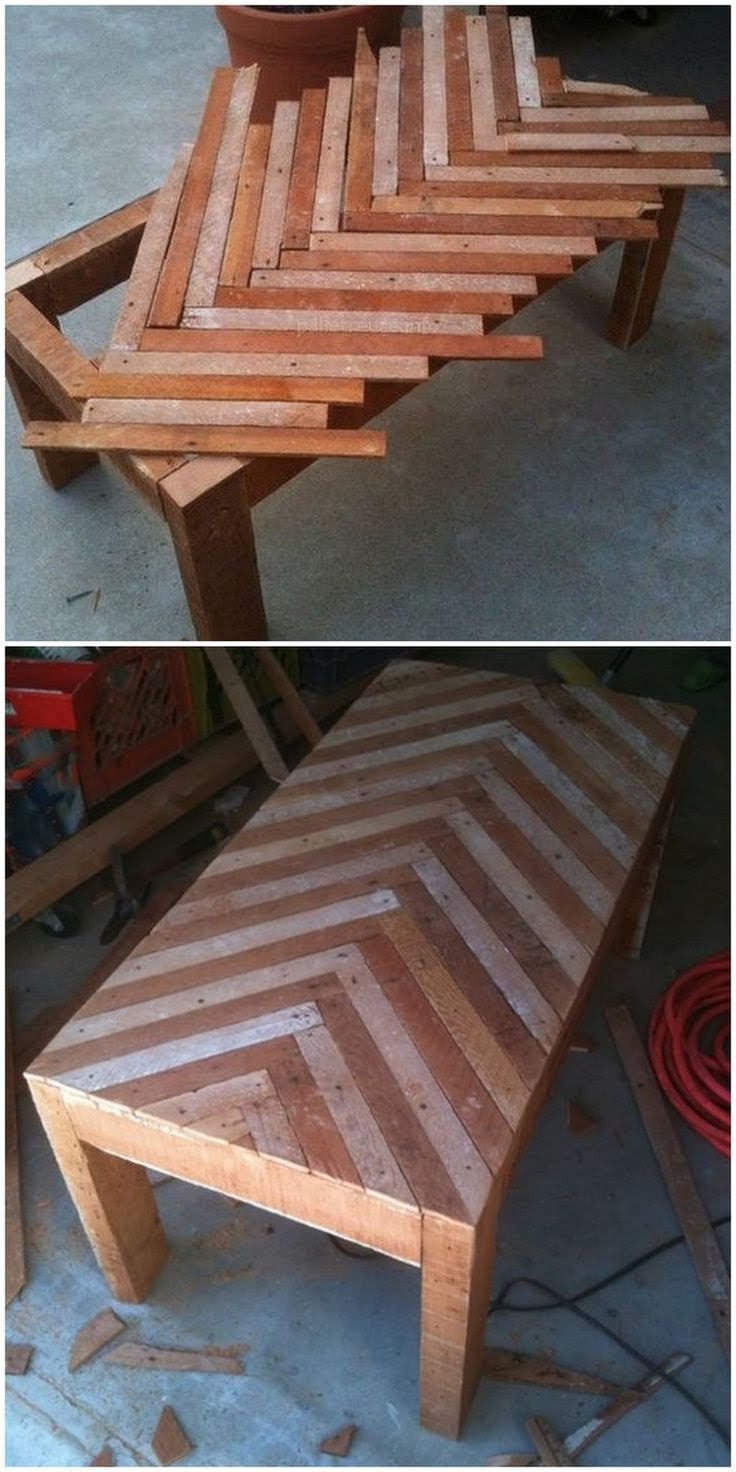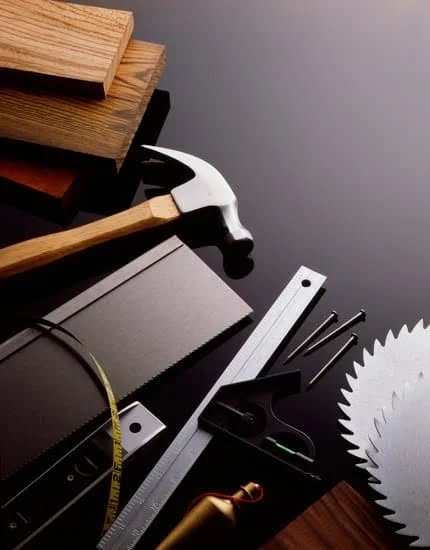Woodworking is a popular and rewarding hobby that allows individuals to unleash their creativity while working with one of the oldest and most versatile materials – wood. Whether you’re looking to create furniture, carve intricate designs, or build custom pieces from scratch, woodworking offers endless possibilities for craftsmanship and personal expression. However, before diving into this exciting world, it’s important to understand what tools are needed to start woodworking and how they play a crucial role in every project.
The first step in embarking on your woodworking journey is acquiring the necessary tools. While it may seem overwhelming at first, having a basic set of hand tools is essential for any beginner woodworker. These tools allow you to shape, cut, and refine your workpieces with precision and control.
As you progress in your skills and projects, power tools will also become indispensable for tackling more advanced woodworking tasks. Additionally, investing in safety equipment is crucial to protect yourself from potential hazards.
In the following sections of this article, we will delve deeper into the different types of tools needed for woodworking at various levels of expertise. We will explore both hand tools and power tools, discussing their purposes and functionalities as well as recommended brands. Moreover, we will also cover the importance of safety equipment and protective gear to ensure a secure working environment. Furthermore, we’ll provide insights on measuring and marking tools that are essential for precise woodworking measurements.
By the end of this article, you’ll have a comprehensive understanding of the essential tools required in woodworking as well as tips on setting up an efficient workspace and finding helpful resources for expanding your skills. So let’s embark on this exciting journey together and discover what it takes to become proficient in the art of woodworking.
Essential Hand Tools for Woodworking Beginners
As a beginner in woodworking, it’s important to have the essential hand tools that will help you get started on your projects. These tools are not only necessary for basic woodworking tasks, but they also serve as the foundation for developing your skills and craftsmanship. Here is a comprehensive list of basic hand tools every beginner should have:
- Tape Measure: A tape measure is an essential tool for accurately measuring wood and planning your cuts. Look for one with both metric and imperial measurements for versatility.
- Claw Hammer: A claw hammer is used for driving nails and removing them if needed. It’s important to choose a hammer with a comfortable grip and a weight that suits your strength.
- Screwdrivers: Having a set of screwdrivers with different sizes and types of heads will come in handy when assembling or disassembling wooden pieces.
- Chisels: Chisels are used for carving, shaping, and cutting wood. Start with a few different sizes to accommodate various tasks.
- Hand Saw: A hand saw is useful for making straight cuts in wood. Choose a saw with finely spaced teeth for smoother cuts.
- Block Plane: A block plane is used to shape and smooth wood surfaces. It’s an excellent tool for removing rough edges and creating chamfers.
- Clamps: Clamps are essential for holding pieces of wood together while glue dries or while performing other tasks such as sanding or sawing.
- Level: A level ensures that your projects are straight and levelled correctly, which is crucial for achieving professional-looking results.
- Utility Knife: A utility knife is essential for marking or scoring wood before cutting or joining pieces together.
- Sandpaper: Sandpaper of varying grits allows you to achieve smooth finishes on your projects by removing imperfections or rough edges.
When starting out in woodworking, you don’t need to invest in expensive tools right away; there are budget-friendly options available that can still serve you well. Look for reliable brands that offer good quality at an affordable price point. As you gain experience and tackle more complex projects, you can gradually upgrade your tools to more professional-grade options.
Remember, woodworking is a skill that develops over time with practice and patience, so starting with the right set of hand tools will set you up for success and enjoyable woodworking experiences.
Power Tools for Next-Level Woodworking Projects
Introduction to Power Tools
Power tools are an integral part of woodworking and can take your projects to the next level. While hand tools are essential for beginners, power tools offer increased efficiency, precision, and the ability to tackle more complex projects. In this section, we will explore some of the essential power tools every woodworker should consider adding to their workshop.
Table Saw
A table saw is often considered the cornerstone of any woodworking shop. It is a versatile and powerful tool that allows for accurate rip cuts and crosscuts in various wood materials. With a flat table surface and a circular blade that protrudes through it, the table saw offers stability and control during cutting operations.
When choosing a table saw, consider features such as fence systems, blade adjustment mechanisms, and safety features like blade guards and anti-kickback devices. Popular brands among woodworkers include Dewalt, Bosch, and SawStop for those with higher budgets.
Miter Saw
A miter saw is another must-have power tool for woodworking enthusiasts. This tool allows you to make precise angled cuts (miters) or beveled cuts on boards quickly and accurately. Its fixed base makes it stable while its pivoting arm swivels to create angled cuts at different degrees.
Look for miter saws with adjustable stops or positive detents at common angles for ease of use. Laser guides or LED lighting can also enhance accuracy when lining up cuts. Top brands in the market include Makita, Festool, and Hitachi.
Router
A router is a versatile power tool that allows you to shape edges, cut grooves or dadoes, create decorative patterns, and more. It operates by spinning a bit at high speed to remove material from the workpiece. Routers come in two types: plunge routers for making deep cuts by plunging the bit directly into the wood and fixed-base routers for more precise edge work.
When selecting a router, consider factors such as motor power, variable speed control, collet size options, and compatibility with guide systems or jigs. Popular router brands include Bosch, Porter-Cable, and Festool.
In the next section, we will discuss important considerations regarding safety when using power tools in your woodworking projects.
Safety Equipment
Woodworking is a rewarding and enjoyable hobby, but it’s important to prioritize safety when working with sharp tools and powerful machinery. In this section, we will discuss the importance of safety in woodworking and provide recommendations for essential safety equipment that every beginner woodworker should have.
The Importance of Safety in Woodworking
Safety should always be the top priority when engaging in any woodworking project. Whether you’re a novice or an experienced woodworker, accidents can happen if proper precautions are not taken. The nature of woodworking involves using sharp tools such as chisels, saws, and knives, which can cause serious harm if not handled correctly. Additionally, power tools like routers and table saws come with their own set of risks.
When working in the workshop, it is crucial to wear appropriate protective equipment to mitigate potential injuries. This includes eye protection such as safety glasses or goggles to shield your eyes from flying wood chips or debris. A dust mask or respirator should also be worn to protect your lungs from fine particles produced while working with wood. Ear protection is essential too, especially when using loud power tools that can cause long-term hearing damage.
Essential Safety Equipment for Beginner Woodworkers
For beginner woodworkers, there are several pieces of safety equipment that are indispensable for a safe woodworking experience. Firstly, a pair of heavy-duty work gloves are recommended to protect your hands from cuts and abrasions while handling rough materials or using hand tools. It is important to choose gloves that allow for dexterity and grip so you can still maneuver your tools effectively.
Another essential piece of equipment is a good-quality dust extraction system or shop vacuum. Woodworking generates a significant amount of sawdust and debris which can pose health risks if inhaled over time.
An effective dust extraction system helps to maintain a clean and safe work environment by removing wood particles from the air. Additionally, using a shop vacuum to clean up dust and debris regularly will prevent slippery surfaces and reduce the risk of accidents caused by tripping or falling.
Recommendations for Protective Gear and Best Practices
When it comes to protective gear, it’s important to invest in high-quality equipment that meets industry standards. Look for safety glasses or goggles that are impact-resistant and provide full coverage for your eyes. Disposable or reusable respirators should fit snugly on your face to filter out harmful dust particles, and they should be replaced regularly according to manufacturer guidelines.
It is also worth considering a pair of earmuffs or earplugs that offer sufficient noise reduction when working with loud machinery. Look for options that provide a high level of noise reduction while still allowing you to hear important sounds from your surroundings, such as shouts or warning signals.
In addition to wearing proper safety equipment, it is essential to follow recommended best practices in the workshop. This includes maintaining a clean and organized workspace, keeping tools well-maintained and sharp (which reduces the risk of kickbacks), and familiarizing yourself with the safety features of each tool before use. Furthermore, always read the user manual for each piece of equipment you are using and take proper training if required.
By prioritizing safety through the use of appropriate protective gear and following best practices, you can enjoy woodworking with peace of mind knowing that you are minimizing risks and protecting yourself from potential injuries.
Must-Have Measuring and Marking Tools
Measuring and marking tools are essential for woodworking, as they ensure accuracy and precision in every project. Whether you are a beginner or an experienced woodworker, having the right measuring and marking tools is crucial to achieving successful results. In this section, we will explore some must-have measuring and marking tools for woodworking.
Essential Measuring Tools
One of the most important measuring tools for woodworking is a tape measure. A quality tape measure is versatile and can be used to measure both short distances, such as the length of a board, and longer distances, such as the dimensions of a room. Look for a tape measure with a strong lock mechanism to hold measurements in place.
Another vital tool is a combination square, which consists of a ruler with a built-in adjustable square head. This tool is perfect for checking the accuracy of 90-degree angles, as well as marking straight lines across wood surfaces. Look for a combination square with clearly marked measurements and tight locking mechanisms.
Marking Tools for Precise Woodworking
One indispensable marking tool is a carpenter’s pencil. Carpenters pencils have flat-sided leads that resist rolling away when placed on inclined surfaces. They are perfect for drawing clear and accurate lines on wood surfaces. Additionally, having multiple pencils allows you to use different lead colors to differentiate between different markings.
A marking knife is another essential tool for precise woodworking. It features an extremely sharp blade that allows you to score accurate lines on wood surfaces without tearing or splintering the material. Additionally, it helps create crisp edges when cutting or chiseling wood.
Tips and Recommendations
When using measuring and marking tools in woodworking projects, it is crucial to prioritize accuracy and precision at all times. Here are some tips to ensure accurate measurements:
- Always double-check your measurements before making any cuts or adjustments.
- Use consistent measuring techniques throughout your project.
- Keep your tools properly maintained and calibrated for accurate results.
In terms of brands, popular options for measuring and marking tools include Stanley, Starrett, and General Tools. However, there are also budget-friendly alternatives available that offer good quality for beginners or those on a tight budget.
Remember that having the right measuring and marking tools is as essential as honing your woodworking skills. These tools allow you to create precise cuts and ensure the overall success of your projects. Invest in quality tools that will last, and don’t be afraid to experiment with different techniques to achieve the best results possible.
Materials and Supplies for Woodworking Projects
When it comes to woodworking projects, having the right materials and supplies is crucial for achieving successful outcomes. Here are some essential items that every woodworker should have in their arsenal:
- Wood Types: Different projects call for different wood types, so it’s important to understand the characteristics of each. Hardwoods like oak, cherry, and walnut are popular choices due to their durability and aesthetic appeal. Softwoods such as pine and cedar are more affordable and easier to work with.
- Adhesives: Adhesives play a significant role in woodworking projects, whether you’re joining pieces together or applying veneers. Wood glue is a common adhesive used by beginners and professionals alike because of its strong bonding properties. For more specific applications, epoxy, cyanoacrylate (super glue), and construction adhesives may be needed.
- Finishing Products: Applying a finish not only enhances the appearance of your project but also protects the wood. Common finishing products include varnishes, stains, paints, oils, waxes, and sealers. Each product has its own application method and finish quality, so consider the desired look and level of protection when choosing your finishing product.
To ensure the success of your woodworking projects, it’s important to source quality materials from reliable suppliers. Here are some resources where you can find a wide variety of wood types, adhesives, and finishing products:
- Local Hardware Stores: Many hardware stores carry an assortment of wood types and commonly-used adhesives and finishing products. They often have knowledgeable staff who can provide guidance on selecting suitable materials for your project.
- Lumberyards: Lumberyards specialize in selling various types of woods specifically for woodworking projects. They offer a wider range of wood species, sizes, and grades to choose from.
- Online Retailers: Online retailers such as Amazon, Woodcraft, and Rockler have large selections of wood types, adhesives, finishing products, and other woodworking supplies. They often provide customer reviews and ratings to help you make informed purchasing decisions.
By using quality materials and supplies in your woodworking projects, you can ensure the longevity and beauty of your creations. Remember to always consider the specific requirements of each project and choose materials that are suitable for the task at hand. With the right materials and supplies in your workshop, you’ll be well-equipped to bring your woodworking visions to life.
Organizing and Setting Up Your Woodworking Workshop
Setting up a woodworking workshop is an important step in pursuing this hobby. Having an organized and functional workspace can make a significant difference in both the efficiency and enjoyment of your woodworking projects. In this section, we will provide some tips for creating an efficient woodworking space, discuss essential workshop organization tools and strategies, and explore space-saving solutions for smaller workshops.
Firstly, let’s talk about creating an efficient woodworking space. It is crucial to have enough room to move around comfortably and safely while working on your projects. Consider the size of your available space and how much you can dedicate to your workshop. Clear out any unnecessary items or clutter to ensure that you have enough space for your tools and projects.
Next, think about the layout of your workshop. Positioning matters when it comes to tools, workbenches, and storage areas. Keep frequently used tools easily accessible by placing them within arm’s reach of the workbench. Arrange larger power tools strategically to optimize workflow. Additionally, ensure that there is adequate lighting in your workspace to prevent eye strain and accidents.
Now let’s discuss essential workshop organization tools and strategies. One tool that is invaluable for keeping things organized is a pegboard or a wall-mounted tool rack. These allow you to keep your hand tools easily visible and within reach while maximizing vertical storage space. You can also consider installing shelves or cabinets for storing larger power tools, materials, and supplies.
Another helpful organizing strategy is the use of labeled bins or drawers for small components like screws, nails, or hinges. This not only keeps everything sorted but also saves time during project assembly when you know exactly where each item is located.
For those with limited space in their workshop area, there are space-saving solutions available as well. Look into foldable workbenches or tables that can be collapsed when not in use, allowing you to reclaim floor space when needed. Alternatively, consider using mobile tool carts or cabinets that can be moved around as per your project requirements.
Honing Your Skills
Woodworking is a craft that requires both practical skills and theoretical knowledge. While hands-on experience is crucial, learning from woodworking books and resources can provide valuable insights, techniques, and inspiration. Whether you’re a beginner or looking to enhance your woodworking skills, there are several essential books and resources worth exploring.
One highly recommended book for woodworking enthusiasts is “The Complete Manual of Woodworking” by Albert Jackson and David Day. This comprehensive guide covers everything from the basics of woodworking to advanced techniques. It includes detailed illustrations, step-by-step instructions, and information on tools, materials, joinery methods, and finishing techniques. With its wealth of knowledge, this book is an excellent resource for beginners seeking to build a strong foundation in woodworking.
For those interested in specific types of woodworking projects such as furniture-making or cabinetry, specialized books can provide targeted guidance. “The Joiner and Cabinet Maker” by anonymous author offers an in-depth look at traditional hand-tool woodworking techniques through the story of a young apprentice. This unique approach combines storytelling with practical instruction, making it an engaging resource for those interested in traditional woodworking methods.
In addition to books, various websites and online tutorials offer valuable information for woodworkers of all levels. Websites like Fine Woodworking (www.finewoodworking.com) provide articles, videos, project plans, and forums where woodworkers can connect with others in the community. Popular woodworking channels on YouTube such as Wood Whisperer and Jay Bates offer videos that demonstrate techniques and share tips and tricks.
It’s important to remember that honing your skills in woodworking requires dedication and practice. Alongside books and online resources, attending workshops or taking classes can be an effective way to improve your craftsmanship further. Many cities have local community colleges or adult education centers that offer woodworking courses taught by experienced professionals.
Expanding your knowledge through books, exploring online resources, or participating in hands-on workshops will not only enhance your skills but also inspire creativity and the development of your personal style as a woodworker. By continuously seeking new learning opportunities, you can become more confident in tackling woodworking projects and achieving impressive results.
| Book/Resource | Description |
|---|---|
| The Complete Manual of Woodworking | A comprehensive guide covering everything from basics to advanced techniques. |
| The Joiner and Cabinet Maker | An engaging resource that combines storytelling with practical instruction. |
| Fine Woodworking (www.finewoodworking.com) | A website offering articles, videos, project plans, and forums for woodworkers. |
| Wood Whisperer and Jay Bates Youtube Channels | Popular woodworking channels on YouTube providing instructional videos and tips. |
| Local Woodworking Workshops/Courses | Attend local workshops or take classes to learn from experienced professionals. |
Conclusion
In conclusion, diving into the world of woodworking can be an exciting and rewarding journey. With the right tools, you can unleash your creativity and bring your woodworking ideas to life. Throughout this article, we have discussed the essential hand tools for beginners, power tools for more advanced projects, safety equipment, measuring and marking tools, necessary materials and supplies, setting up a functional workshop space, honing your skills through resources and books, and connecting with fellow enthusiasts.
As a beginner woodworker, it is important to start with the basics. Invest in essential hand tools such as a claw hammer, chisels, a block plane, a coping saw, and more. These budget-friendly options will allow you to get started without breaking the bank. With these tools in hand, you will be able to bring your woodworking ideas to life.
Once you have mastered the basics of hand tools, it’s time to move on to power tools for more advanced projects. Power tools like a table saw or drill press can take your woodworking skills to the next level. However, always prioritize safety when working with power tools by using personal protective equipment and following recommended safety practices.
Don’t forget about organizing your workshop space for maximum efficiency. Good workshop organization is essential for finding the right tool at the right time and maintaining a clutter-free work environment. Investing in storage solutions like wall-mounted racks or tool chests can help keep your workspace organized and save valuable space.
Finally, never stop improving your skills by exploring resources such as books, websites, tutorials, or joining woodworking communities. Woodworking is an art that can constantly evolve as you learn new techniques or discover innovative methods of creating beautiful pieces.
Now that you are equipped with knowledge about essential tools and resources needed for woodworking success, it’s time to dive in headfirst. Embrace the excitement of this rewarding hobby and let your creativity flow as you embark on countless woodworking projects. Remember that every project is an opportunity to learn, grow, and improve your skills. So, grab your tools and get ready to experience the endless possibilities of woodworking.
Frequently Asked Questions
What tools are needed to begin woodworking?
To begin woodworking, there are a few essential tools that you’ll need. First and foremost, a good set of basic hand tools is essential, including a tape measure, chisels, hand saws, and various types of clamps. A quality workbench or sturdy table is also important to provide a stable surface for your projects.
Power tools like a circular saw, drill, and sander can greatly speed up the process and make certain tasks easier. Other useful tools to consider are a miter saw for precise angled cuts, a router for creating decorative edges, and a pocket hole jig for strong joinery.
How do I start simple woodworking?
Starting simple woodworking can be an exciting journey into the world of crafting with wood. Begin by choosing straightforward projects that match your skill level and interest. Small boxes, cutting boards, or simple shelves are great beginner projects.
Acquire the necessary tools and materials for your chosen project and carefully plan out each step before starting. It’s important to practice safety measures such as wearing protective eyewear when operating power tools and using clamps to secure your workpieces in place. Start slow and focus on developing fundamental skills like measuring accurately, making straight cuts, and assembling joints securely.
Can I teach myself woodworking?
Yes, it is possible to teach yourself woodworking! While having access to formal training or mentorship can be beneficial, many skilled woodworkers have taught themselves through self-study and practice. There are numerous resources available online including tutorials, videos, forums, and websites dedicated to woodworking where you can learn various techniques at your own pace.
Building a solid foundation of knowledge by reading books about woodworking principles will help you understand the basics before embarking on practical projects. Remember to start small and gradually challenge yourself with more complex projects as you gain confidence in your abilities.

Hi everyone! I’m a woodworker and blogger, and this is my woodworking blog. In my blog, I share tips and tricks for woodworkers of all skill levels, as well as project ideas that you can try yourself.





